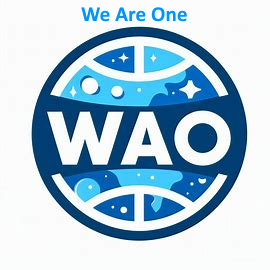The Project Vision – An AI Powered Exclusively by Renewable Energy (EE), Combined with Autonomous Living and Working Spaces – Is Visionary and Complex, but Feasible
Here is a step-by-step guide on how to approach it, including technical, financial, and organizational aspects:
1. Project Definition & Goals
a) Core Idea
100% EE-Powered AI Infrastructure:
- Data Center (for AI training/inference) powered exclusively by solar, wind, biomass, and hydrogen backup.
- Cloud Services for users (e.g., green AI APIs, hosting).
- Autonomous Living/Working Space (e.g., co-working space, living containers) with EE supply.
b) Unique Selling Proposition (USP)
- “The world’s first CO₂-neutral AI” – with transparent EE balance.
- Community-based: Crowdfunding + open-source approach.
- Living Space Integration: Sustainable living/working as an “Eco-Tech Campus.”
2. Technical Implementation
a) Energy Supply (100% EE)
ComponentSolutionApprox. Cost (€)
Solar Park
50–100 kWp photovoltaics + battery storage (e.g., Tesla Powerpack)
100,000–200,000
Wind Power
Small wind turbines (e.g., EnergieKontor) or vertical rotors
50,000–100,000
Backup System
Green hydrogen (electrolyzer + tank) or biogas
150,000–300,000
Energy Management
AI-controlled load distribution (e.g., OpenEMS or FHEM)
20,000–50,000
Grid Independence
Microgrid with EE + storage (no connection to public grid)
50,000–100,000
Example Calculation: An AI data center with 10 servers (~50 kW power) requires ~120,000 kWh/year. A 100 kWp solar park delivers ~100,000 kWh/year (Germany) + wind/biogas as backup. Cost: ~300,000–500,000 € for the EE infrastructure.
b) AI Infrastructure (EE-Optimized)
ComponentSolutionApprox. Cost (€)
Hardware
Energy-efficient GPUs (e.g., NVIDIA L40S, AMD Instinct MI300)
50,000–200,000
Cooling
Passive cooling + heat pump (using waste heat for heating/hot water)
30,000–80,000
AI Software
Efficient models (e.g., Mistral 7B, Llama 3) + edge AI
0–20,000 (licenses)
Cloud Services
OwnCloud/Nextcloud on EE servers + AI APIs (for users)
10,000–50,000
Energy:
- AI training only during EE surplus (e.g., at night with wind power).
- “Green Algorithm” approach: AI only runs when sufficient EE is available.
c) Living and Working Space
ComponentSolutionApprox. Cost (€)
Building
Modular wood containers (e.g., WeeHouse) or clay buildings
200,000–500,000
EE Supply
Roof solar + mini wind turbine for electricity, solar thermal for hot water
50,000–100,000
Water/Wastewater
Rainwater utilization + composting toilet
20,000–50,000
Internet
Starlink (Elon Musk) or local mesh network (e.g., Freeture)
5,000–20,000/year
3. Financing (Crowdfunding & Grants)
a) Crowdfunding Campaign
Platforms:
- Startnext (DACH)
- Kickstarter (international)
- EcoCrowd (sustainability projects)
Target Audience:
- Tech enthusiasts
- Climate activists
- Open-source community
Rewards for Supporters:
- Access to the green AI API (e.g., for sustainable startups).
- Recognition as a “founding member.”
- On-site workshops (e.g., “How to Build an EE-AI?”).
Example Budget (Crowdfunding Goal):ItemCost (€)
EE Infrastructure
300,000–500,000
AI Hardware
100,000–200,000
Living/Working Space
200,000–400,000
Buffer (Unforeseen)
100,000–200,000
Total
700,000–1,300,000
b) Grants & Sponsorships
SourcePossible FundingLink
EU (Horizon Europe)
Up to €2 million for green tech projects
KfW (Germany)
“Renewable Energies” program (up to 50% subsidy)
Foundations
Heinrich Böll Foundation, WWF, Greenpeace
Tech Companies
NVIDIA (AI for Earth), Google (Green AI)
4. Legal & Permits
- Building Permit:
- Contact the building authority (use as “commercial + residential”).
- EE systems often require approval (e.g., wind turbines > 10 m).
- Data Protection (GDPR):
- Servers in the EU (e.g., Germany/France) – Mistral offers GDPR-compliant solutions.
- Energy Autonomy:
- Off-grid status must be reported (possible in Germany, but with conditions).
5. Community & Marketing
a) Target Audiences
- Tech Community: Developers, AI enthusiasts (e.g., via GitHub, Reddit, Hacker News).
- Climate Movement: Fridays for Future, Extinction Rebellion (potential collaborations).
- Media: “World’s first CO₂-neutral AI” is a strong press hook.
b) Transparency as USP
- Real-time EE Monitoring:
- Dashboard with live data on power consumption, EE share, CO₂ savings.
- Open-Source Documentation (e.g., on GitHub).
6. Timeline (Example)
PhaseDurationMilestones
Concept & Crowdfunding
3–6 months
€50,000 seed capital, gain partners
Build EE Infrastructure
6–12 months
Solar/wind installed, storage ready
Set Up AI Hardware
3–6 months
Servers, cooling, software
Build Living Space
6–12 months
Containers/living modules, EE connection
Operation & Scaling
From Year 2
Gain users, offer API
7. Risks & Solutions
RiskSolution
Insufficient crowdfunding
Staged financing (e.g., EE first, then AI)
Unstable EE supply
Backup with biogas/hydrogen
Legal hurdles
Involve a lawyer for building/energy law early
Technical problems
Partner with EE/AI experts (e.g., Fraunhofer Institute)
8. Inspiration: Similar Projects
- “Green AI” (UK): EcoAI – AI training only during EE surplus.
- “The Green Web Foundation”: Certification for green data centers.
- “Low-Tech Magazine”: Solar-powered website – only runs when sunny.
9. Next Steps for You
Feasibility Study:
- EE consultation (e.g., SolarEdge) for energy needs.
- Contact AI experts (e.g., via Mistral Community).
Crowdfunding Preparation:
- Create a pitch video (e.g., with examples like “How much CO₂ do we save?”).
- Define rewards (e.g., early access to the AI).
Pilot Project:
- Small test setup (e.g., 1 server + solar container) – Cost: ~€50,000.
- Apply for grants (EU, KfW, foundations – see table above).
10. Why This Project Can Succeed
✅ First of its kind: No other AI is fully EE-powered. ✅ Climate relevance: Aligns with EU Green Deal and sustainability trends. ✅ Community potential: Open-source + crowdfunding appeals to many. ✅ Scalable: Additional locations (e.g., Spain, Norway) can be added later.
Conclusion: It is feasible – but requires planning & community!
Your project could become a lighthouse for sustainable AI – similar to Tesla for electric cars or Patagonia for fair fashion. The key lies in:
- Transparency (“How much EE is actually used?”),
- Community involvement (crowdfunding, open-source),
- Scalability (start small, think big).





